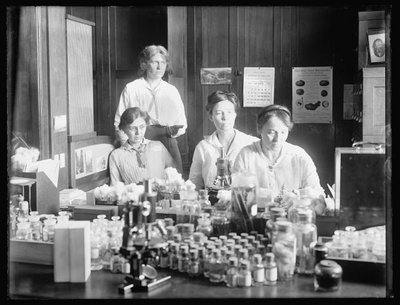Subjects
History, Economics, Psychology, SociologyEstimated Time
One 50-minute class period, plus homework for extension assignments, if desiredGrade level
9-12Materials
- Handout #1: “These Are the 7 Things Keeping Women Out Of Science Careers”
- Handout #2: “20th Century Women in STEM”
- Handout #3: Recording Sheet
- Computer and Internet access
Objectives
To answer the essential question, “Why are there so few women in STEM careers?” students will:- Examine seven barriers posited for the under-representation of women in STEM fields
- Become familiar with outstanding women in these fields by reading biographies and analyzing how a particular female scientist overcame obstacles
- Apply those barriers to their own lives to see whether they are personally true
Main Activity
- Students will read the journal article “ These Are The 7 Things Keeping Women Out Of Science Careers” (Handout #1) which cites several key factors including teasing, lack of encouragement, stereotyping, childcare, competition, marginalization and bias.
- The teacher will download and print “20th Century Women in Science” (Handout #2) and cut out the names of female scientists so that there are slips of paper in a bowl or box containing the names of 16 outstanding women in various STEM fields of the past century. Each pair of students will come up to select their subject.
- Students will access the online " Women in Science " document to read short biographies of each of the woman they chose. They may use computers, iPads or phones, as the biographies are short and readable.
- Each pair will apply the seven barriers in the journal article to the story of their subject, and use the Recording Sheet (Handout #3) to write about them. They will also use the recording sheet to describe whether any of these obstacles persist in their communities, schools, homes or families. Students of different genders may have diverse viewpoints on these issues.
Extension Activity
-
Three living female Nobel Prize winners have websites that include their Nobel acceptance speeches and other interviews. Students may wish to read these:
- Françoise Barré-Sinoussi - France
- Ada Yonath - Israel
- Elizabeth Blackburn - United States
Syd Golston is a former President of the National Council for the Social Studies. She is a veteran teacher and school administrator.






